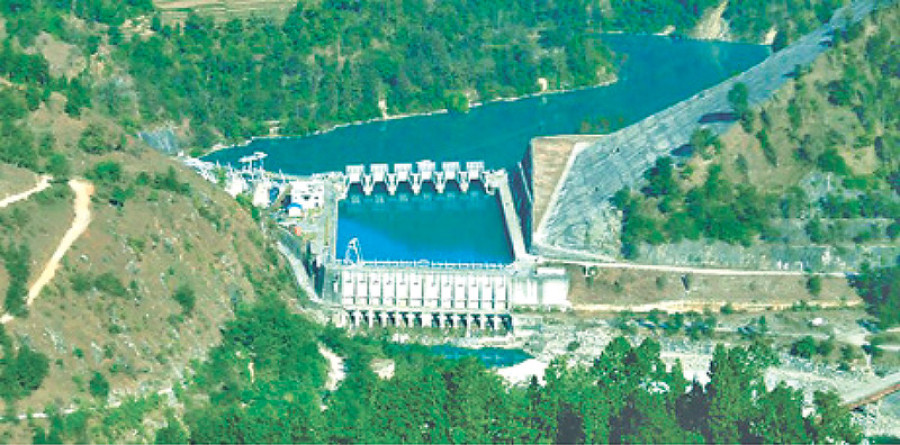Opinion
Shelved hydro projects
Nepal’s large-scale hydropower projects impact locals in the project areas in multiple and complex ways
Sanju Koirala
Construction of large-scale hydropower projects is a controversial issue in many parts of the world, and Nepal has its own share of such controversies. While Nepal’s tremendous potential to generate hydropower has raised high hopes among the Nepali people as a means to prosperity, it has also created uncertainty among many who reside in the project areas. In the last three decades, many large-scale hydropower projects were proposed for construction. However, as soon as these projects were announced, they were surrounded by controversies and the project implementation process was halted in the planning phase. Controversies are mostly found to have arisen on issues surrounding the costs and benefits of the projects, particularly their environmental and social impacts, compensation, displacement, resettlement, and agreement between Nepal and India on water, energy and other benefit-sharing.
The large-scale hydropower projects that have been trapped in long gestation periods include 201 MW Arun III, 750 MW West Seti, 10,800 MW Karnali Chisapani, 6,720 MW Pancheshwar multipurpose project, 900 MW Upper Karnali, and 3300 MW Sapta Koshi multipurpose project. These projects have had long-term impacts on the lives of the locals long before the construction processes even began. There are mainly four kinds of impacts: developmental, psychological, socio-economic and environmental. Among these, developmental and psychological impacts are documented more frequently than the other two.
Developmental and psychological impacts
Hydropower generation requires good topographical locations where there are river canyons or a narrowing of the river. In Nepal, such locations are generally in remote areas where most inhabitants live below the poverty line. Although development activities are initiated in these regions as soon as hydropower projects are proposed, many of these initiatives are soon halted. The situation is worse if the proposed hydropower projects would submerge large areas and displace locals, making the government, NGOs and the private sector hesitant to invest. The concerned authorities are reluctant to build and upgrade schools and health centres, and the locals struggle to receive basic development services like education and health. In such a scenario, the construction of roads, water supply systems, and micro-electricity plants are far from the attention of concerned authorities. Similarly, the locals of the project areas are themselves reluctant to invest in businesses, personal matters, or community development initiatives. Some of them instead join other locals in migrating to urban areas and investing their money there.
The level of fear felt by the locals of the project areas is also found to be high. Facing imminent displacement, people are forced to leave the places where they were comfortable. Beginning life in an unfamiliar place is always traumatic. Furthermore, facing displacement from one’s ancestral lands and losing cultural, religious and environmental ties is disheartening. There are a number of fears: distribution of inadequate compensation, being given land in undesirable areas, loss of employment, separation from relatives and communities, socio-cultural and economic clashes with host communities, language differences, increase in expenses due to restrictions imposed by the host community for the use of common resources and different climatic and environmental conditions. The fear of being displaced is found to be higher among vulnerable groups such as women, Dalits, people with disabilities and elderly people.
The locals experience long-term stress due to the uncertainty created by lengthy gestation periods. They face dilemmas while making decisions about the most basic household matters, such as repairing houses and planting trees or crops. The feeling of uncertainty not only affects personal decision-making, but also village level decision-making. In most parts of Nepal, villagers work together to solve communal problems. For instance, locals manage forest areas, construct and maintain village roads and micro hydropower plants, and embank riversides. However, the locals face dilemmas about initiating community maintenance and development activities, as such initiatives would be worthless if/when project construction begins and the people are displaced.
Socio-economic and environmental impacts
The socio-economic and environment impacts are comparatively lower during the planning phase than they would be during the implementation and post-implementation phases. The price of land generally increases in such areas after the announcement of a project. The hesitation of concerned authorities and local people to invest in the development and economic activities indirectly triggers negative economic impacts in the area.
With regard to social impacts, division among the local people can be observed in hydropowerproject areas. Locals are mostly divided on the basis of their acceptance of, or resistance to, the project. Large-scale environmental impacts mostly occur during and after construction of hydro projects. But in areas where projects are trapped in the gestation period, there is considerable negligence in the conservation of forest areas. Locals and concerned authorities are found to pay less attention to forest conservation or in reforestation activities, as they are under the impression that the land will be submerged once project implementation begins.
The actual construction of large-scale hydropower projects may begin years after the project is announced by the government and project investors. If the project is surrounded in controversies, its commencement leads to increasing uncertainty and protracted conflict. Under such circumstances, the locals residing in the project areas have to bear the costs even before construction. The mechanisms applied to recompense those affected by hydropower projects, such as compensation, resettlement and benefit-sharing packages commence only when the project is actually going to be implemented. Yet the locals start bearing the costs well in advance. Those who are affected by hydropower projects are thus excluded from development initiatives in the name of benefiting a certain sector of society or contributing to national development.
This demonstrates how the government is unethical and irresponsible in planning development interventions. Is should come up with interim development plans and special development packages for areas affected by hydropower projects with long gestation periods. In addition, measures to minimise the impacts of the pre-implementation phase should be incorporated into involuntary displacement policies of the government and project investors.
Koirala holds a PhD in human geography from the University of Otago, New Zealand and can be reached at [email protected]




 9.12°C Kathmandu
9.12°C Kathmandu










